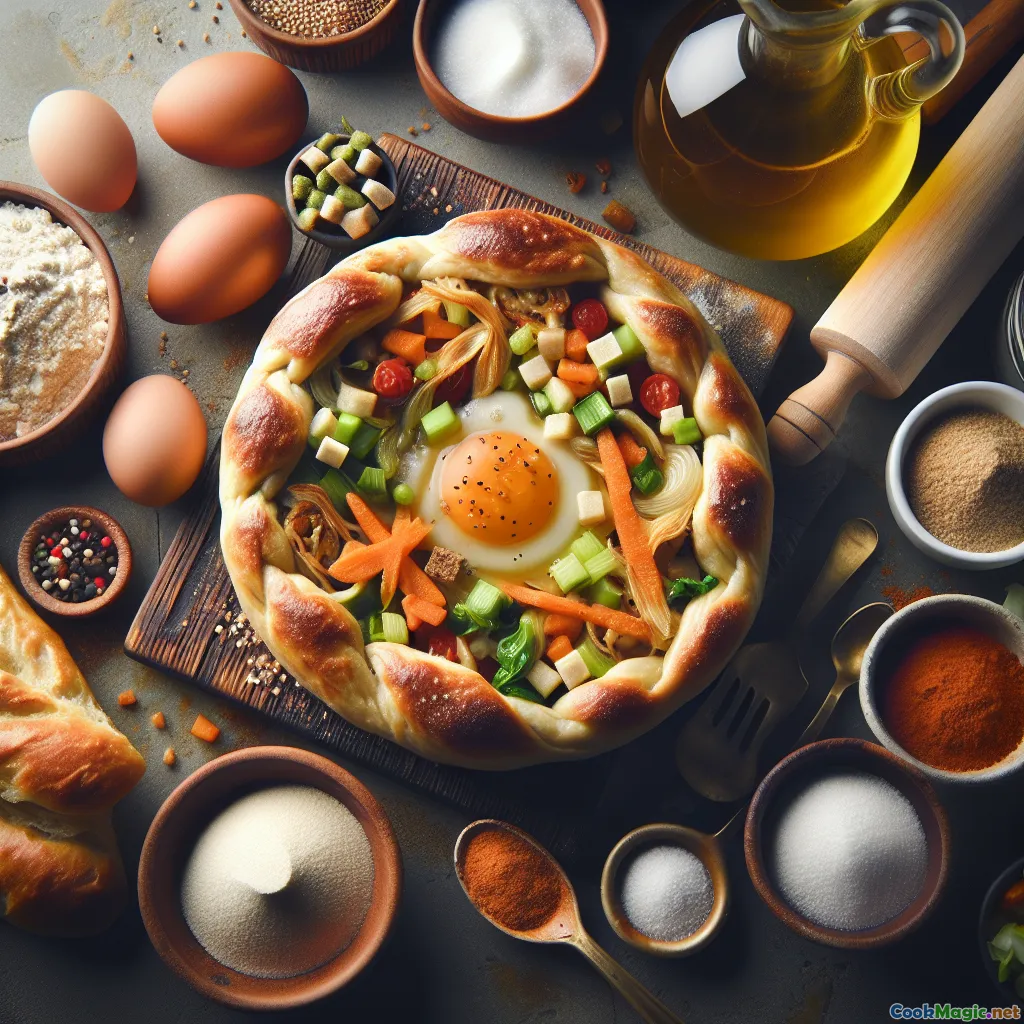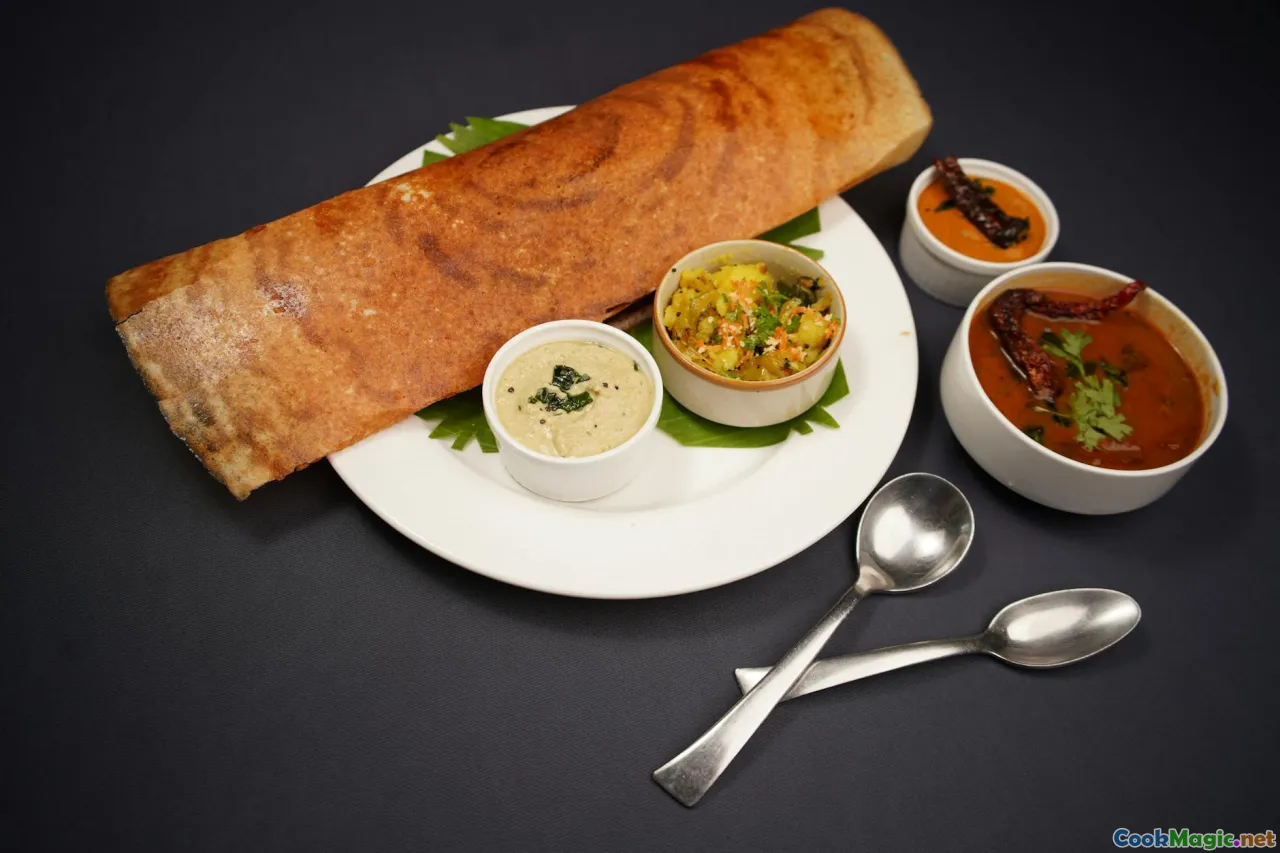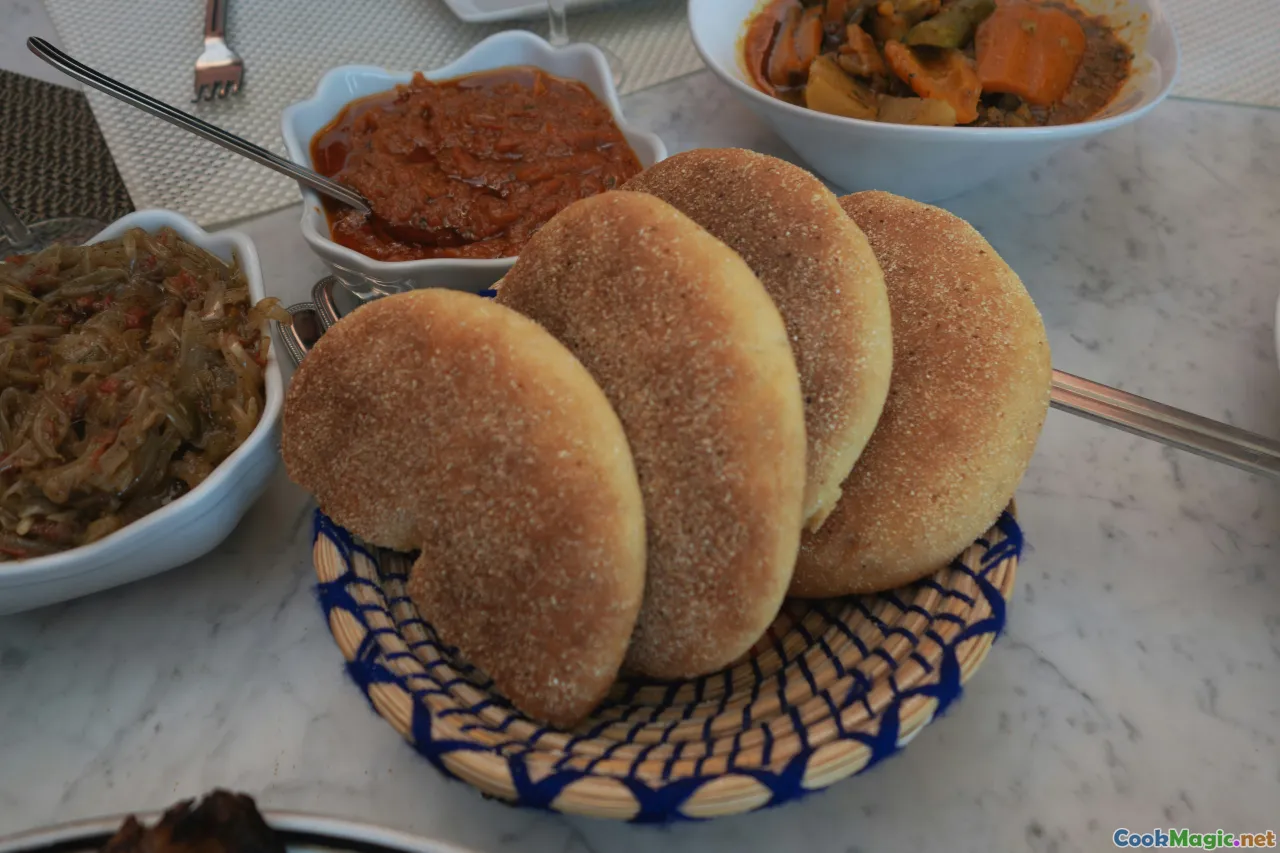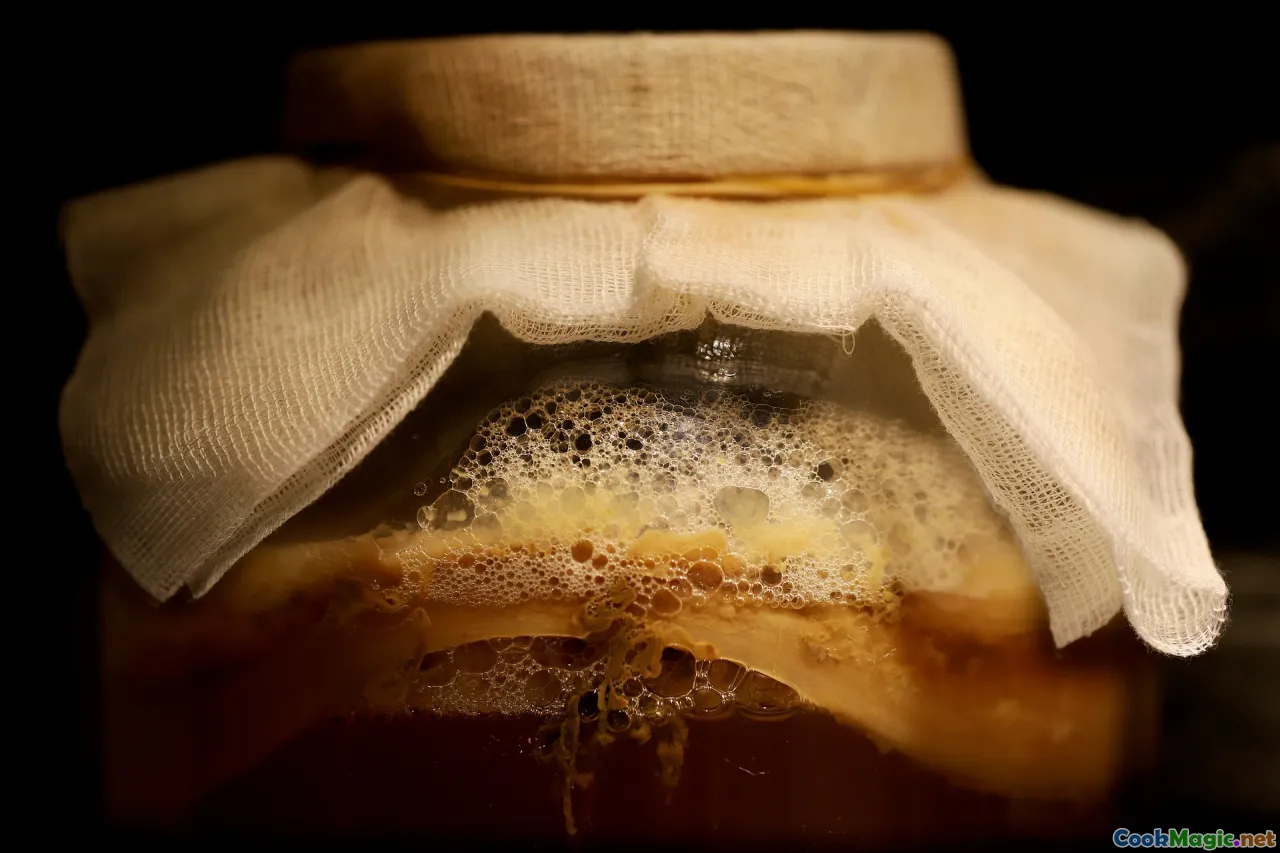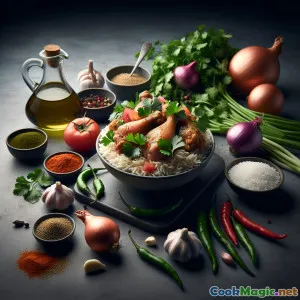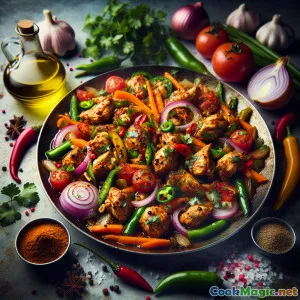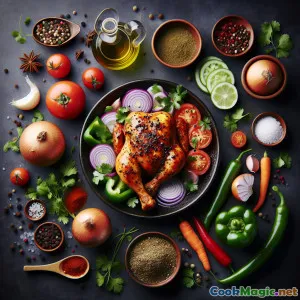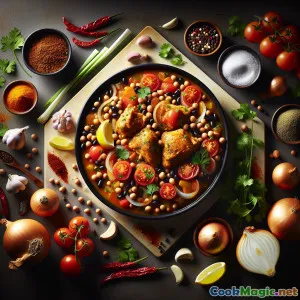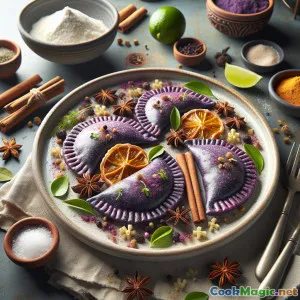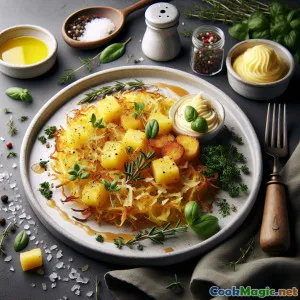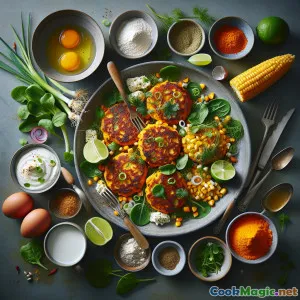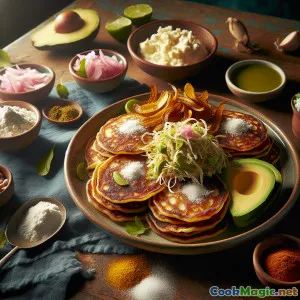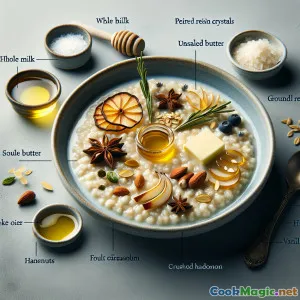
Bánh Mì Nóng Xốp Men: Bánh Mì Trứng Phần Lan Phổ Biến của Somalia
(Fluffy Fermented Canjeero: Somali Breakfast Flatbread)
(0 Đánh giá)0
911
tháng 7 06, 2025
Báo cáo sự cố
Nguyên liệu
-
2 cups Bột mì đa dụng
(Có thể thay thế bằng bột mì trắng hoặc hỗn hợp không chứa gluten cho phiên bản GF)
-
2 cups Nước ấm
(Sử dụng nước ấm vừa để kích hoạt quá trình lên men)
-
1 teaspoon Men
(Men nở khô hoạt động, có thể bỏ qua để lên men tự nhiên)
-
0.5 teaspoon Muối
(Tăng cường hương vị)
-
0.5 teaspoon Đường
(Giúp kích hoạt men để lên men)
-
2 tablespoons Dầu thực vật
(Để nấu canjeero)
(Có thể thay thế bằng bột mì trắng hoặc hỗn hợp không chứa gluten cho phiên bản GF)
(Sử dụng nước ấm vừa để kích hoạt quá trình lên men)
(Men nở khô hoạt động, có thể bỏ qua để lên men tự nhiên)
(Tăng cường hương vị)
(Giúp kích hoạt men để lên men)
(Để nấu canjeero)
Dinh dưỡng
- Khẩu phần: 6
- Kích thước khẩu phần: 1 chiếc bánh pancake lớn (khoảng 100g)
- Calories: 180 kcal
- Carbohydrates: 35 g
- Protein: 5 g
- Fat: 3 g
- Fiber: 1 g
- Sugar: 1 g
- Sodium: 200 mg
- Cholesterol: 0 mg
- Calcium: 15 mg
- Iron: 1 mg
Hướng dẫn
-
1 - Trộn Bột:
Trong một bát lớn, kết hợp bột mì, nước ấm, men nở (nếu dùng), muối và đường. Dùng phới đánh đều đến khi hỗn hợp mịn và loãng, giống như độ đặc của bột làm bánh crepe.
-
2 - Lên men:
Che phủ bát bằng khăn và để bột lên men ở nhiệt độ phòng trong 12-24 giờ cho đến khi bong bóng và có vị chua nhẹ.
-
3 - Nấu Canjeero:
Làm nóng chảo chống dính trên lửa vừa. Thoa nhẹ dầu thực vật để chống dính. Đổ một muỗng canh bột vào chảo, xoay đều để tạo thành một vòng tròn mỏng, đều. Nấu không lật cho đến khi xuất hiện lỗ trên bề mặt trên cùng và viền nhấc lên, khoảng 2-3 phút.
-
4 - Phục vụ:
Xếp chồng canjeero đã nấu chín và đậy kín để giữ ấm. Dùng kèm với các món hầm, mật ong hoặc bơ để dùng sáng hoặc bất cứ lúc nào trong ngày.
Trong một bát lớn, kết hợp bột mì, nước ấm, men nở (nếu dùng), muối và đường. Dùng phới đánh đều đến khi hỗn hợp mịn và loãng, giống như độ đặc của bột làm bánh crepe.
Che phủ bát bằng khăn và để bột lên men ở nhiệt độ phòng trong 12-24 giờ cho đến khi bong bóng và có vị chua nhẹ.
Làm nóng chảo chống dính trên lửa vừa. Thoa nhẹ dầu thực vật để chống dính. Đổ một muỗng canh bột vào chảo, xoay đều để tạo thành một vòng tròn mỏng, đều. Nấu không lật cho đến khi xuất hiện lỗ trên bề mặt trên cùng và viền nhấc lên, khoảng 2-3 phút.
Xếp chồng canjeero đã nấu chín và đậy kín để giữ ấm. Dùng kèm với các món hầm, mật ong hoặc bơ để dùng sáng hoặc bất cứ lúc nào trong ngày.
Thông tin thêm về: Bánh Mì Nóng Xốp Men: Bánh Mì Trứng Phần Lan Phổ Biến của Somalia
Canjeero: Linh hồn của bữa sáng Somali
Canjeero là loại bánh mì phẳng lên men truyền thống của Somali với kết cấu nhẹ, xốp và vị chua dễ chịu, gợi nhớ đến bánh sourdough. Đây là món ăn biểu tượng trong các bữa sáng trên khắp Somalia và một số khu vực Đông Phi. Chìa khóa tạo nên sự nhẹ đặc biệt của canjeero nằm ở quá trình lên men, nơi men tự nhiên hoặc men bổ sung phân hủy bột từ từ trong vòng 12-24 giờ, biến các nguyên liệu đơn giản — bột mì, nước, muối — thành một món ăn nhẹ nhàng, ngon miệng.
Thông thường, bột được làm đặc hơn một chút so với bánh pancake hoặc bánh crepe và đổ lên chảo phẳng để nấu nhanh mà không cần lật. Các lỗ nhỏ đặc trưng hình thành trên bề mặt trong quá trình nấu chín, tương tự như injera của Ethiopia nhưng nhỏ hơn và mỏng hơn. Canjeero thường được cuộn lại hoặc gập lại và phục vụ kèm với nhiều loại topping: hầm gia vị mặn, mật ong, bơ hoặc thậm chí là trà sữa.
Công thức này thích nghi với kỹ thuật cổ truyền dành cho bếp nhà, cung cấp sự linh hoạt với việc dùng men tùy chọn và các loại bột không chứa gluten để phù hợp với nhiều chế độ ăn khác nhau. Khi làm canjeero, việc để thời gian lên men hợp lý rất quan trọng vì đó là lúc các hương vị đặc trưng và bong bóng phát triển.
Ngoài việc cung cấp dinh dưỡng, canjeero còn mang ý nghĩa văn hóa như một món ăn an ủi hàng ngày và món ăn cộng đồng, tượng trưng cho lòng hiếu khách và truyền thống trong các gia đình Somali. Nó kết nối các thế hệ, thể hiện sự kiên cường và phong phú trong ẩm thực Somali.
Mẹo:
- Dùng nước ấm để kích hoạt men hoặc quá trình lên men tự nhiên.
- Đậy nắp bột lỏng lẻo để tránh khô khi lên men.
- Nấu ở nhiệt độ trung bình để đạt được kết cấu nhẹ nhàng nhất.
- Thử nghiệm bằng cách phục vụ kèm các loại sốt Somali truyền thống hoặc mật ong để thưởng thức hương vị đích thực.
Canjeero là một lễ hội của sự đơn giản và phép màu của quá trình lên men, một biểu đạt nghệ thuật của di sản ẩm thực được truyền qua nhiều thế kỷ.
Chúc bạn thành công trong việc chế biến loại bánh mì mềm, đậm đà này, tôn vinh văn hóa Somali và mang lại trải nghiệm bữa sáng độc đáo.
